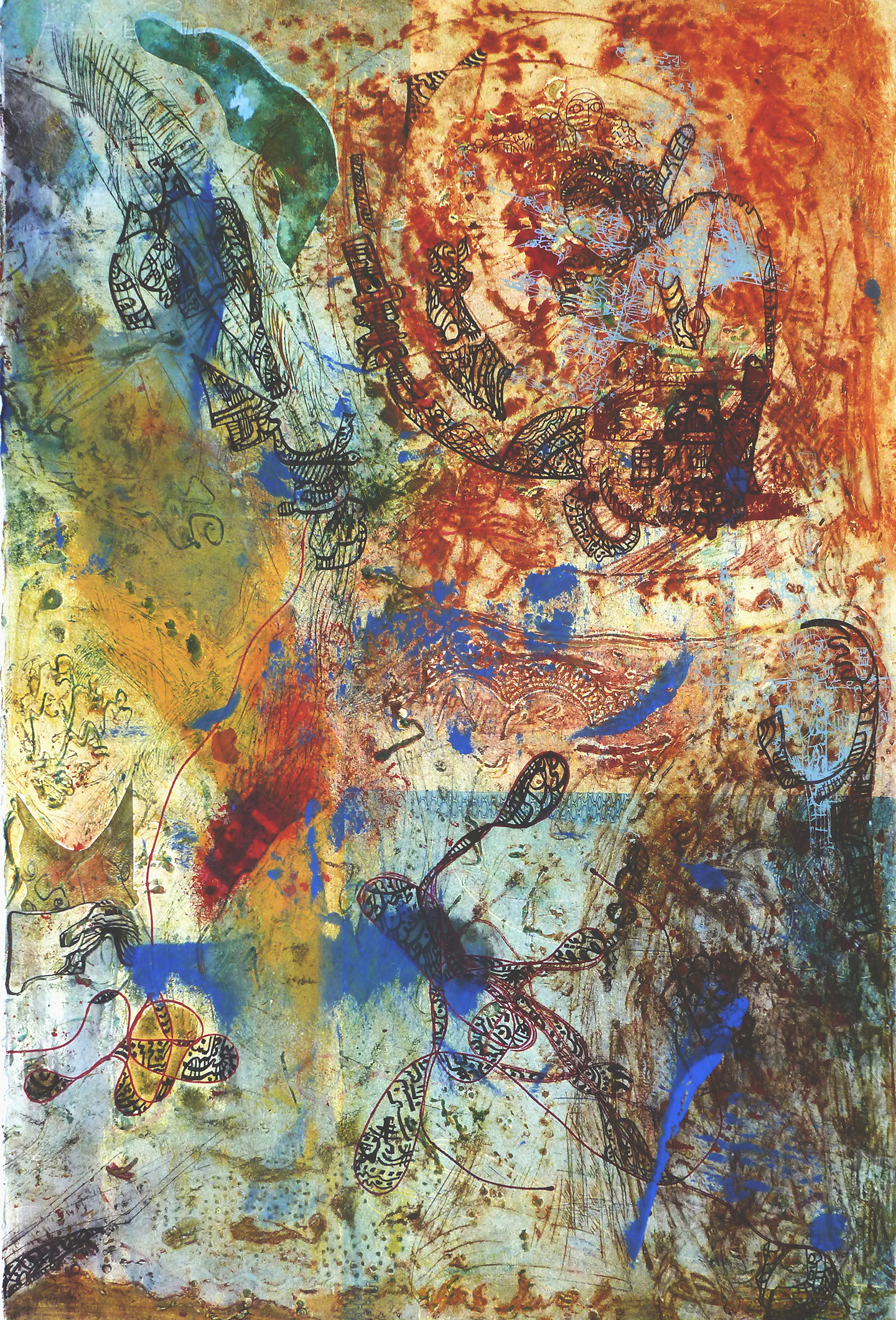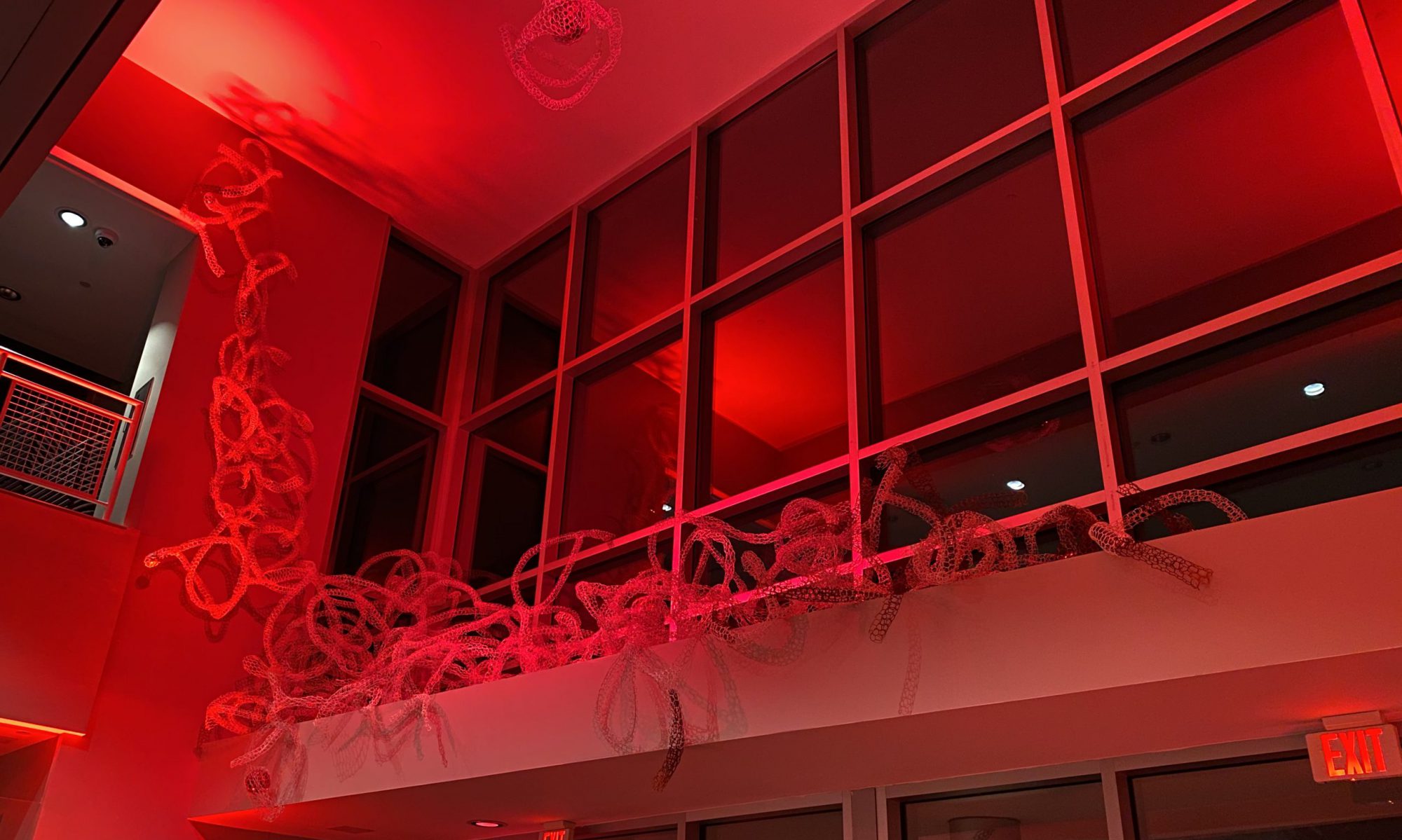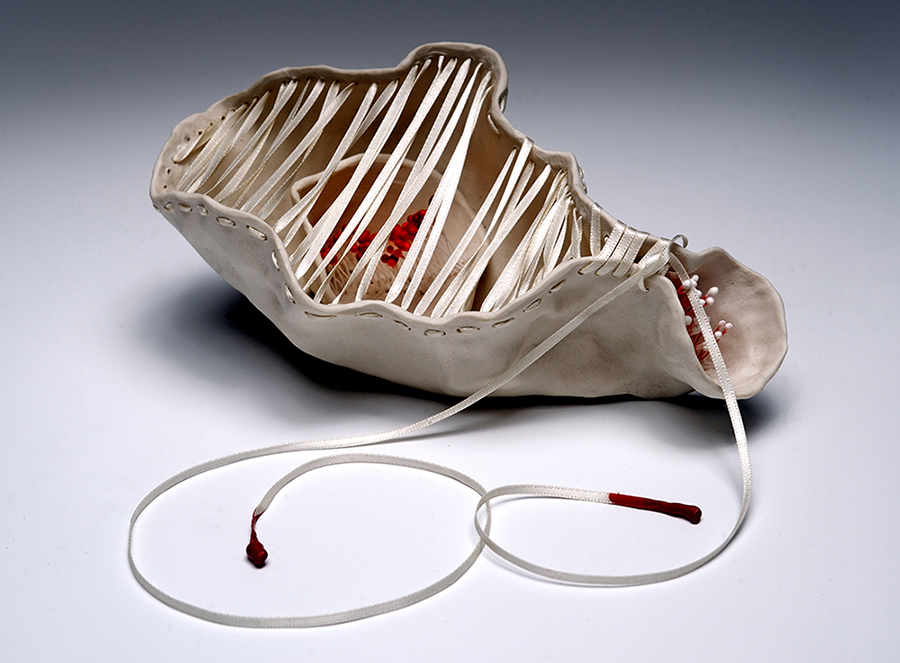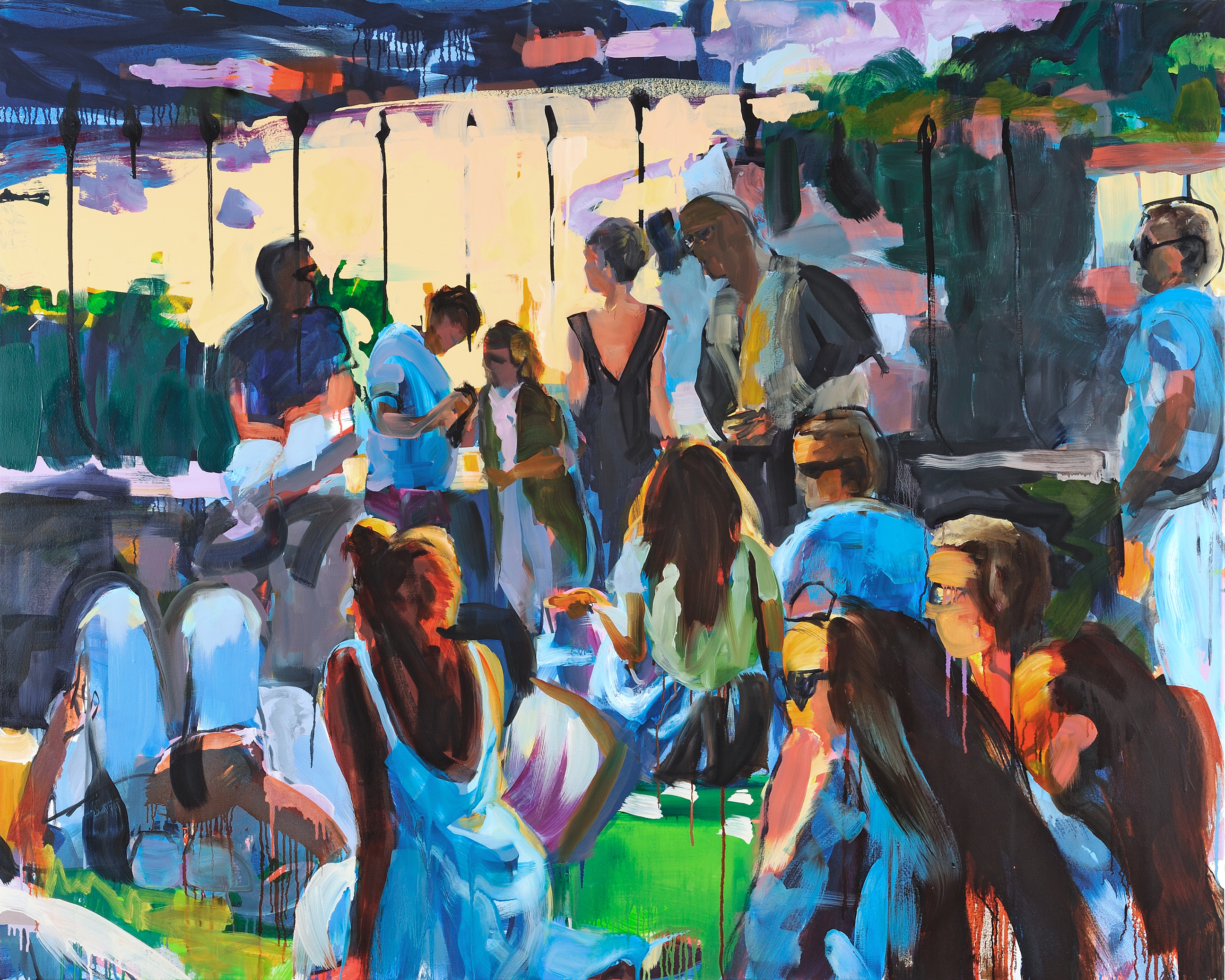Sami Miranda jamming with Pepe Gonzalez, William Knowles, and Mark Merella
Chino Bicicleta Explains His Actions to Spanish Joe
Creative collaboration is integral to Sami Miranda’s art. Please enjoy this video of Sami jamming with Pepe Gonzalez on bass, William Knowles on piano, and Mark Merella on percussion. We also hope that you will visit his online visual art exhibition, We are Always in Conversation: Work by Samuel Miranda.
You can also learn more about Samuel by visiting his website at https://www.samimiranda.com/ and follow him on Instagram at @tres-raices_arts
Email the gallery director, Mary Higgins for inquiries about work in the virtual exhibition.
March 7th, 2020 1-3pm Artist Talk with Kirsty Little
January 25, 2020, 2-4PM, Walter Kravitz, Elizabeth Vorlicek, and Kirsty Little
A Conversation with Sally Kauffman
A Conversation with Sally Kauffman
Chill Out: Paintings by Sally Kauffman
Artist Talks: November 20, 2019, 5-7PM
Forum Gallery: Schlesinger Arts Center
Northern Virginia Community College – Alexandria Campus
When did you know that you were an artist?
As a child I would sequester myself in a secret spot and draw for hours.
Was there a particular experience that inspired your decision to pursue art?
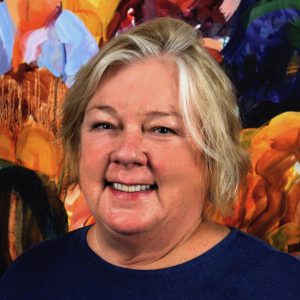 My grandmother taught me to draw and paint as a young girl. One of my favorite memories is sitting by her side watching her paint with watercolors. Her life inspired my own. She was a magical, mystical woman who entertained her family with lavish meals during holidays, especially at Christmas when she dressed as Mrs. Klaus.
My grandmother taught me to draw and paint as a young girl. One of my favorite memories is sitting by her side watching her paint with watercolors. Her life inspired my own. She was a magical, mystical woman who entertained her family with lavish meals during holidays, especially at Christmas when she dressed as Mrs. Klaus.
She owned and operated a therapeutic spa for women as well as an art practice. She painted wonderful images of nature and people. She taught me that I could be whatever I wanted to be.
Are there particular artists or art movements that are an inspiration to you?
Movements and painters amongst the many that influenced my practice from early on include Ukiyo-e artist Hokusai, Venetian School painters Titian, Tintoretto and Veronese, Les Nabis artists Bonnard and Vuillard and Fauvist Matisse. Abstract Expressionism was and remains a major influence. De Kooning, Frankenthaler, Rothko, Pollock, Raushenberg, Johns, Twombly, Mitchell, Krasner, I can’t think of any who did not influence my work. Bay Area Figurative painter Diebenkorn was a revelation to me. Contemporary movements and artists that I currently look at are the YBA (Young British Artists) Cecily Brown, Jenny Saville, Rachel Whiteread and Tracey Emin among many others as well as South African artist Marlene Dumas.
Can you describe your artistic process?
To create the series “Relaxed States” which includes the exhibition “Chill Out”, I discreetly captured images of groups of people lounging and relaxing together using my phone camera. I create digital sketches from the photos by collaging elements and enhancing the color to create a visually dense image. The saturated digital color informs my palette. I mix oil paint and oil painting mediums into a fluid, smooth consistency in small jars, then brush blocks of transparent color directly on the canvas building up multiple layers that afford me flexibility in defining the position and form of the elements. As the forms evolve I respond to the images on the canvas and only reference the digital sketch if I find the need for the original images to inform my own.
Can you talk about how you use visual technologies (computers and software) with your artistic process?
I limit the use of software tools in my creative process to my iPhone and image processing software including Preview, iPhoto and Gimp, all free or shipped with my Mac even though I used many sophisticated tools for 25 years in the tech industry as a user experience designer, graphic designer and art & design director. I’ve resisted integrating digital technology into my art even though I am still fascinated by it, I’m seeking an escape from designing simulated environments and want to live again in the physical world using tangible tools. A good day is when I come home from the studio with paint in my hair and on my face and hands. I use digital tools to create digital sketches in the conceptual phase using snapshots with my iPhone and manipulating the images on the computer. I print the sketches and use them as a reference. The final artwork is produced by hand with paint and canvas.
You have four paintings in the exhibition that were inspired by the summer jazz concerts at the National Gallery in Washington DC. Can you tell us about that experience and what made you want to explore the experience in paint?
 The long answer: after a 20 year hiatus from painting while I worked in the tech industry, I needed inspiration as I resumed my painting practice so I enrolled in a class called “Painting in a Series” at the Corcoran taught by Judy Southerland. Judy reviewed my work and asked me what I was going to paint. I did not know so she gave me a written exercise titled “What Matters” in which you described an activity you care about and how it affects you and others, a social system that interests you and your stance in relation to this system and a condition or question that interests you. I filled it out but still it was unclear to me. So I turned to my private life. My husband and I love to cook and entertain our friends so I started photographing and painting my dinner parties. Out of this grew a series of work centered on groups of people sharing food, swimming and listening to music.
The long answer: after a 20 year hiatus from painting while I worked in the tech industry, I needed inspiration as I resumed my painting practice so I enrolled in a class called “Painting in a Series” at the Corcoran taught by Judy Southerland. Judy reviewed my work and asked me what I was going to paint. I did not know so she gave me a written exercise titled “What Matters” in which you described an activity you care about and how it affects you and others, a social system that interests you and your stance in relation to this system and a condition or question that interests you. I filled it out but still it was unclear to me. So I turned to my private life. My husband and I love to cook and entertain our friends so I started photographing and painting my dinner parties. Out of this grew a series of work centered on groups of people sharing food, swimming and listening to music.
The paintings in the exhibition were inspired by evenings spent sitting in the National Sculpture garden listening to jazz surrounded by the fascinating people who live in DC. I wanted the paintings to celebrate and exude the kind of energy and pleasure that you would find in Manet’s “Le Dejeuner sur l’herbe” and Titian’s painting “The Bacchanal of the Andrians”.
What about your strolls through Porto inspired you? The color and light in the two series of works is very different. How do you use color and light to create the atmosphere in your paintings?
 I visited the Passeio Das Virtudes during the “golden hour” which is the first or last hour of sunlight in a day when the light is soft and warm and the shadows long. This combination of warm colors contrasted with darker cool color defines my typical palette and explains my attraction to the scene.
I visited the Passeio Das Virtudes during the “golden hour” which is the first or last hour of sunlight in a day when the light is soft and warm and the shadows long. This combination of warm colors contrasted with darker cool color defines my typical palette and explains my attraction to the scene.
The paintings inspired from the “Jazz in the Garden” depict the warmer light just before the golden hour. I’m fascinated by paintings that create drama using chiaroscuro, the strong contrast of light or lack of it to define volume in form. Diebenkorn and Hopper’s use of chiaroscuro in their paintings is a good example of this and of course, Caravaggio was the master.
What is that you would like the viewer to take away from their experience of seeing this exhibition?
A collector of a painting in this series recently wrote to me “every time we look at your piece of art we are more delighted.” That is one of the most satisfying aspects of my art practice.
Is there any advice that you would give students as they have made the decision to pursue art?
Define what you want your art practice to be and treat your practice as a profession. This can and will change over time as you mature as an artist and a person. Schedule time for your practice and stick to it even if it involves sitting in your studio and staring at the walls, this is critical to your development. Build a network of your peers by attending local exhibitions and introducing yourself to the artists and gallery owners. Once you have built up that network support your artist friends by attending their art events. Define a social media strategy for yourself. Attend the free lectures at the Smithsonian. Read Art/Work = Everything You Need to Know (and Do) As You Pursue Your Art Career. Rent a studio that hosts open studios and will expose you to other artists and collectors.
To kickstart my art practice after a long hiatus, I studied at the Corcoran in the evenings for 3 years with Judy Southerland who become a mentor for me. (find a mentor) The artists I met in her class are now my peers. I rented studios through which I met different groups of artist friends. I also joined the Studio Gallery, the longest running artist coops in DC, while I had another full-time job. Scheduled annual shows taught me how to prepare and install an exhibit. I learned that I needed to paint when I really didn’t have time or feel like it and how to market my work. I served on the board and learned how to run a gallery. And made more artist friends. I applied for and attended an artist residency at Vermont Studio Center and met an international group of artists. Your network is going to be very important to you. They will expose you to new opportunities and will enrich your practice and life.
What can we expect from your work in the future?
I’m embarking on a big adventure in January. I’m moving to Rome for a year. There are so many things I want to do while I’m there, I’ll be taking workshops, spending lots of time in the museums and galleries and soaking it all in. I’m hoping it will take my work in new directions.
October 19, 2019 2-4PM Art Opening – Sally Kauffman, Jean Hirons, Cathy Abramson and Veronica Szcalus
Please join us on Saturday afternoon October 19, 2019 from 2-4PM for the Final 2019 art openings at the Fisher and Schlesinger Center Art Galleries. We will be celebrating the work of four talented local artists. The artist are Sally Kauffman in the Forum Gallery, Jean Hirons in the Passage Gallery and Cathy Abramson in the Margaret W. & Joseph L. Fisher Art Gallery.
Forum Gallery
Chill Out: Paintings by Sally Kauffman
October 12, 2019 – December 23, 2019
 Kauffman is best known for her abstract yet allusory large-scale paintings that celebrate and exude pleasure. Her gestural brushwork and sensual application of paint reference the figure in landscape. Kauffman draws on personal experiences as a source for her images; Friday Jazz in the Garden concerts at the NGA and recent strolls through Porto provide the setting for the series “Chill Out”. Kauffman captures moments in snapshots and digitally manipulates the composition and intensity of color. The dense, saturated images become the source for the paintings. Almost human scale figures painted in saturated, flowing oil color on large format canvas entice the viewer to engage in their own narrative.
Kauffman is best known for her abstract yet allusory large-scale paintings that celebrate and exude pleasure. Her gestural brushwork and sensual application of paint reference the figure in landscape. Kauffman draws on personal experiences as a source for her images; Friday Jazz in the Garden concerts at the NGA and recent strolls through Porto provide the setting for the series “Chill Out”. Kauffman captures moments in snapshots and digitally manipulates the composition and intensity of color. The dense, saturated images become the source for the paintings. Almost human scale figures painted in saturated, flowing oil color on large format canvas entice the viewer to engage in their own narrative.
Passage Gallery
Winter Light: Pastels by Jean Hirons
October 12, 2019 – December 23, 2019
 Jean Hirons has spent 20 years specializing in the art of soft pastel. Jean’s passion is for the landscape, particularly buildings in the landscape. She began by painting New England houses and rural farms. Since 2015, she has focused on various areas of Washington, DC: Capitol Hill, Georgetown, Chinatown, and Dupont Circle. She finds this subject matter both challenging and satisfying. Composition is always the starting point in any of her paintings and she often looks for abstract shapes. For color, she may use what she sees but, more often, uses color from her imagination. She wants color to be real enough, but not necessarily what was there! Jean also loves complex, broken color and finds pastel to be a perfect medium for achieving this effect.
Jean Hirons has spent 20 years specializing in the art of soft pastel. Jean’s passion is for the landscape, particularly buildings in the landscape. She began by painting New England houses and rural farms. Since 2015, she has focused on various areas of Washington, DC: Capitol Hill, Georgetown, Chinatown, and Dupont Circle. She finds this subject matter both challenging and satisfying. Composition is always the starting point in any of her paintings and she often looks for abstract shapes. For color, she may use what she sees but, more often, uses color from her imagination. She wants color to be real enough, but not necessarily what was there! Jean also loves complex, broken color and finds pastel to be a perfect medium for achieving this effect.
The Passage Gallery exhibit, “Winter Light” displays 6 pastels capturing the moments of one day in winter on the C&O Canal in Washington DC.
Margaret W. & Joseph L. Fisher Art Gallery
Dreams of the Underground: Oil Paintings by Cathy Abramson
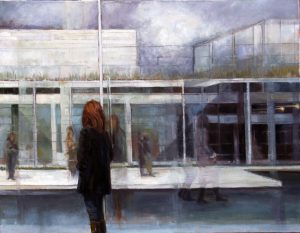 Cathy Abramson’s oil paintings investigate the stories of the city. These representational paintings examine the emotional subtext of change; the connections or estrangement of people in transitional neighborhoods. She sees moments of poetry in the ordinary. Although she paints particular people and scenes, these paintings about daily life in Washington, DC resonate with everyone. Cathy spent two years investigating and painting the neighborhood and people around Kennedy Street, NW. She recorded scenes that are about recent history, change, nostalgia and social struggle; the joys and frustrations of contemporary urban life.
Cathy Abramson’s oil paintings investigate the stories of the city. These representational paintings examine the emotional subtext of change; the connections or estrangement of people in transitional neighborhoods. She sees moments of poetry in the ordinary. Although she paints particular people and scenes, these paintings about daily life in Washington, DC resonate with everyone. Cathy spent two years investigating and painting the neighborhood and people around Kennedy Street, NW. She recorded scenes that are about recent history, change, nostalgia and social struggle; the joys and frustrations of contemporary urban life.
April 16th, 2019 6:30-8:30PM Confluence: Two Rivers, One City
During the last week of “Coming to Light, Encaustics by Angela White” and “NOMAD, The Art of Alonzo Davis“, the Schlesinger Art Galleries is hosting a special public presentation of Confluence 2019, the DC region’s annual publication of critical writing on the visual arts on Tuesday evening from 6:30pm The speaker is Phil Hutinet, the publisher of East City Art.
CONFLUENCE: Two Rivers One City Public Presentation
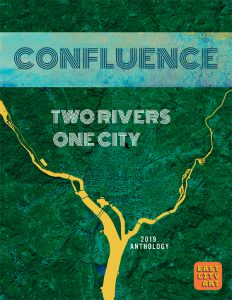 East City Art, DC’s visual arts publication of record, has released its second annual anthology of critical writing titled CONFLUENCE: Two Rivers One City. The 30 essays of the anthology present some of East City Art’s most compelling writing and document the DC region’s most prominent influences on regional visual arts culture.
East City Art, DC’s visual arts publication of record, has released its second annual anthology of critical writing titled CONFLUENCE: Two Rivers One City. The 30 essays of the anthology present some of East City Art’s most compelling writing and document the DC region’s most prominent influences on regional visual arts culture.
The title of the anthology alludes to the confluence of the Potomac and Anacostia rivers which flow through the region affectionately known as the “DMV” (DC, Maryland and Virginia).
CONFLUENCE 2019 offers insight into DC’s art world with in-depth critical writing and full color photographs of work by local, national and international artists displayed at regional galleries, museums and art spaces.
“The dedication of the East City Art writing staff to publish serious art criticism has never been stronger. Articles with ample discussion make ECA an alternative to the condensed and often superficial reviews offered elsewhere of gallery exhibits,” explains Editor-at-Large and Claudia Rousseau, Ph.D.
Publisher Phil Hutinet will present an overview of the reviews in CONFLUENCE 2019 while highlighting examples of work by local artists published in the anthology. During and after the presentation, audience members will have the opportunity to participate in the discussion and ask questions.
Speaker Biography
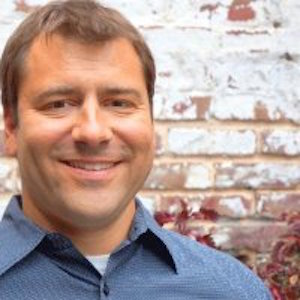 Phil Hutinet, a third generation Capitol Hill resident, is the publisher of East City Art, DC’s Visual Arts publication of record, which he began in 2010. In 2012-2013, his consultancy work east of the river yielded the Anacostia Playhouse, Craig Kraft Studios, the Anacostia Arts Center and the 2012-2013 LUMEN8ANACOSTIA festivals. In 2015, 2018 and 2019 he acted as the Gateway Open Studio Tour coordinator. From 2013-2018, he produced EMULSION, East City Art’s regional juried show and has produced over 150 local exhibitions in his career as a gallery owner and director. Currently, he oversees the ECA Foundation’s Critical Arts Writing and Research Program which produces an annual anthology titled CONFLUENCE: Two Rivers One City. Hutinet has been interviewed by or has made appearances on the BBC, Capital Community News, Euronews, Washingtonian Magazine, Washington City Paper, The Washington Post, WJLA ABC News Channel 7/Channel 8, WTOP and other local, national and international media.”
Phil Hutinet, a third generation Capitol Hill resident, is the publisher of East City Art, DC’s Visual Arts publication of record, which he began in 2010. In 2012-2013, his consultancy work east of the river yielded the Anacostia Playhouse, Craig Kraft Studios, the Anacostia Arts Center and the 2012-2013 LUMEN8ANACOSTIA festivals. In 2015, 2018 and 2019 he acted as the Gateway Open Studio Tour coordinator. From 2013-2018, he produced EMULSION, East City Art’s regional juried show and has produced over 150 local exhibitions in his career as a gallery owner and director. Currently, he oversees the ECA Foundation’s Critical Arts Writing and Research Program which produces an annual anthology titled CONFLUENCE: Two Rivers One City. Hutinet has been interviewed by or has made appearances on the BBC, Capital Community News, Euronews, Washingtonian Magazine, Washington City Paper, The Washington Post, WJLA ABC News Channel 7/Channel 8, WTOP and other local, national and international media.”
Small Domestic Miracles: Works by Emily R. Shepardson
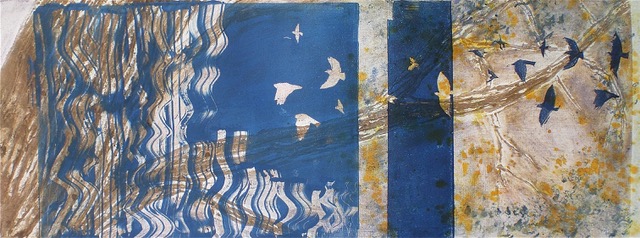 Emily R. Shepardson will be having a solo exhibition entitled Small Domestic Miracles in the Fisher Gallery of prints and paintings starting January 20, 2018 and running through March 5, 2018. There will be a artist reception on Saturday afternoon, February 10, 2018 2-4PM.
Emily R. Shepardson will be having a solo exhibition entitled Small Domestic Miracles in the Fisher Gallery of prints and paintings starting January 20, 2018 and running through March 5, 2018. There will be a artist reception on Saturday afternoon, February 10, 2018 2-4PM.
Emily is a printmaker and painter who describes her process has collage-like. For a print she will begin with a series of different plates and stencils layers and combined until the final image is achieved.
She describes small domestic miracles as household magic like soaking white napkins in bleach to remove food stains, or perfectly gluing a broken cup back together again. It could also be catching sight of a tangle of birds circling over the house or having a crow follow me to work. In my art, it’s a glimpse of a swan in the creek, or the shadow touch of a hand on your back.
You can follow Emily on Instagram at @shepardsonemily
Passages: Monotypes by Clare Winslow
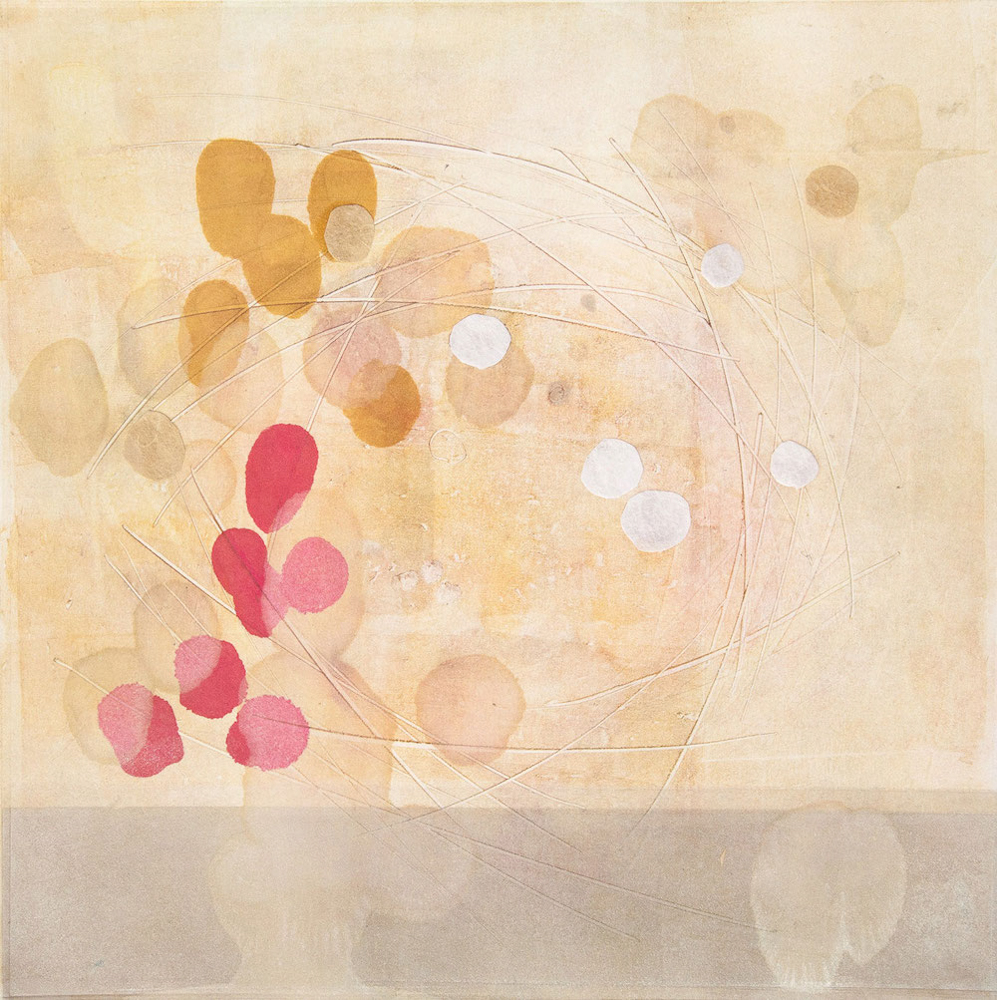
Washington DC area artist, Clare Winslow will be exhibiting an exquisite series of unique handpulled prints inspired by the light, nature and the moment of seasonal change. The exhibitions runs from January 20, 2018 through March 4, 2018 in the passage gallery on the second level of the Schlesinger Center. The opening reception is Saturday, February 10, 2018 2-4PM. Clare studied printmaking, painting and drawing at the Corcoran College of Art and Design and received a BA in Painting from Catholic University. Her professional memberships include Pyramid Atlantic, The Washington Project for the Arts, and George Mason University Printmakers Guild. You can find out more about Clare on her website at https://clarewinslow.com/
The Time of No Time by Nahid Navab
The Margaret W. & Joseph L. Fisher Art Gallery at the Rachel M. Schlesinger Concert Hall and Arts Center at Northern Virginia Community College’s Alexandria Campus will display the art exhibit The Time of No Time, a collection of works by artist Nahid Navab. The show will be on display from Aug. 7 through Sept. 17 with an artist’s reception scheduled for 2 p.m. to 4 p.m. Saturday, Aug. 12. Some of the pieces in The Time of No Time are multi-layered, multi-textured abstract, and figurative handprints imply a state of floating in search of a shelter or something to hang on. Navab explained that her work tells stories and represents figures and objects that hold their dignity while facing chaotic situations.
